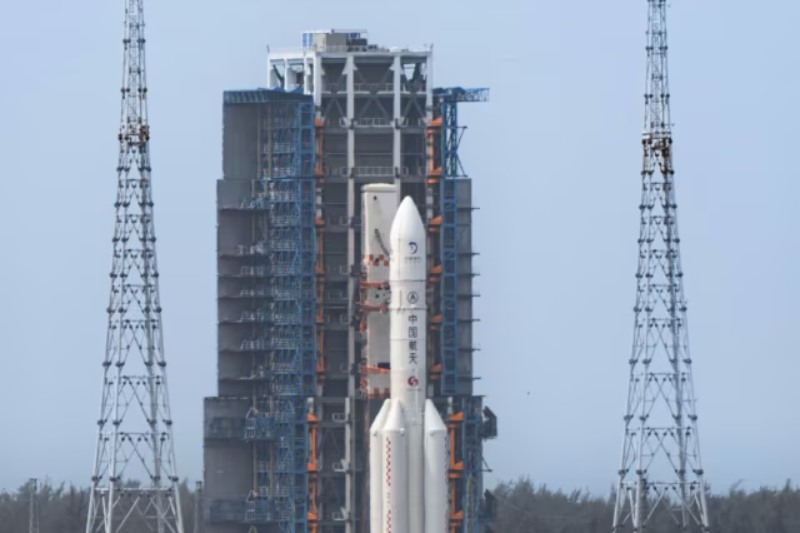Collaborating with China, Pakistan launched ¡Cube-Qamar, its inaugural lunar mission, from Hainan, China, on Friday. According to the officials, the satellite will orbit the moon as a component of Beijing’s Chang’e-6 space program.
Both Chinese state television and Pakistani TV stations carried live footage of the satellite launch aboard a Chinese Long March5 Y8 rocket.
Pakistan’s first lunar orbit mission was hailed by President Asif Zardari and Prime Minister Shehbaz Sharif as a triumph for the country’s scientists.
Pakistan’s principal envoy to Beijing, Khalil Hashmi, who was at the launch site, verified on X that the operation was “successful”. “It (satellite) will be deployed in Moon orbit on May 8,” he said.
According to officials, the iCUBE-Q, or CubeSat, was built by Pakistan’s Institute of Space Technology (IST), China’s Shanghai University, and the country’s national space agency, SUPARCO.
CubeSats are tiny satellites that are primarily distinguished by their uniform design and compact size. They are used in space for a variety of applications, are typically made of cubic shape, and weigh only a few kilograms.
The iCUBE-Q orbiter, which weighs around 7 kg, is equipped with additional sensors and equipment for deep-space communication, altitude control, and other purposes in addition to two cameras for taking pictures of the lunar surface.
According to officials, the ICUBE-Q’s successful separation from the Chang’e-6 Orbiter will meet the main mission requirements. The secondary criterion will be the satellite receiving a beacon signal after separation, which will verify that the orbiter is operating as intended.
Lastly, the orbiter will attempt to snap images of at least two objects simultaneously (the Earth, Moon, and the orbiter) in addition to taking pictures of the Earth and Moon.
ICUBE-Q will gather data on the lunar magnetic field, create a model of the lunar magnetic field, and create a foundation for future missions and international lunar cooperation, according to authorities.
A prominent figure connected to Pakistan’s space program, Dr. Khurram Khurshid, stated that the satellite will enter lunar orbit in five days and stay there for three to six months.
He continued by saying that the orbiter will assist in taking various views of the moon’s surface, providing Pakistan with its own satellite photos of the moon for scientific purposes.


